The Diaphragm is our biggest and most important muscle when it comes to breathing. In this article I’ll investigate if the diaphragm can strength our mysterious “core”.
Already in an earlier article I talked about strengthening the core while using an inspiratory muscle training device. You can read about it here (German).
In this article I’ll go a little further and discuss diverse breathing techniques and how to use them to strengthen the “core”.
Using these techniques might – indirectly – lead to increased hull stability especially during bench press, overhead presses, squats and deadlifts.
Furthermore, I’ll introduce you to an innovative “breathing tool”, the “Breath Belt”.
Diaphragm – you inner roll cage for more power during strength training
In order to make a car more buckling resistant and to enhance safety and performance you install a roll cage.
Similar benefits might occur after having regularly trained your diaphragm. Consequent training of this breathing muscle might lead to its hypertrophy.
In this context researchers investigated the connection between the thickness of the diaphragm and its effects on breathing and power with world class powerlifters (Brown et al. 2013).
How is it possible that strengthening the diaphragm might lead to create more output in exercises like deadlifts, bench press or squats?
Let’s have a brief look on the anatomy of the diaphragm
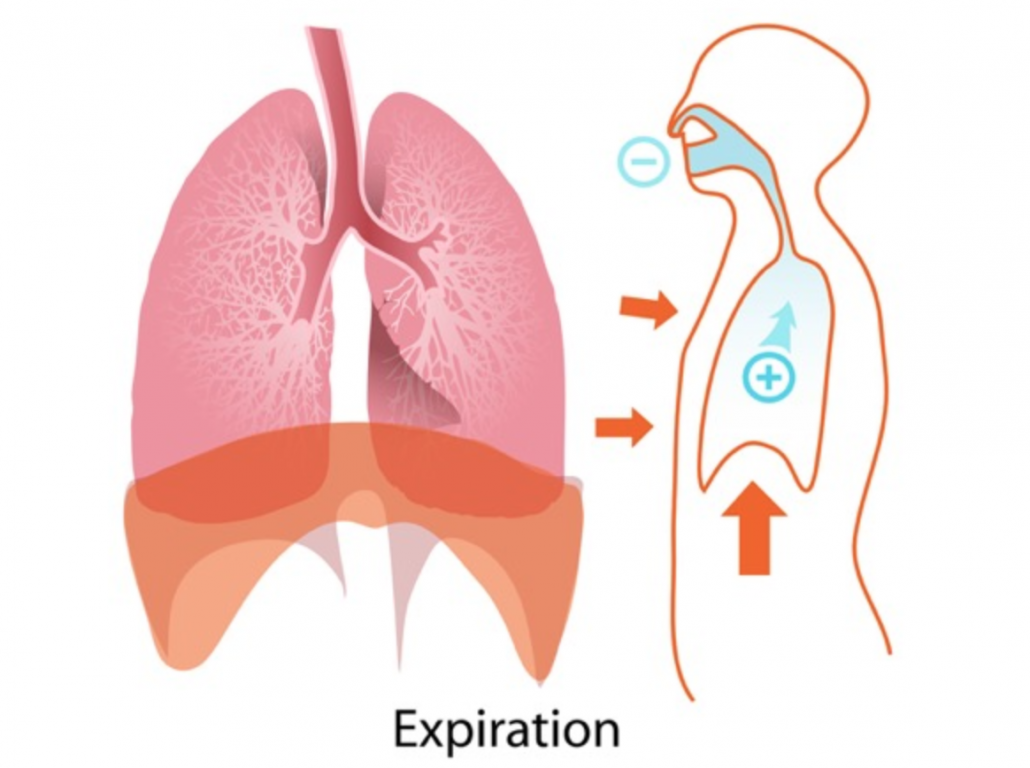
To make a long story short the diaphragm (orange in the picture) is located under the right and the left lung (see picture). It (the diaphragm) divides the body within into the thorax and the abdomen.
For our respiration the diaphragm plays an important role, if not THE most important role of all respiratory muscles. A detailed overview of the respiratory muscle can be found in another of my articles, here (German).
Diaphragm – The real core?
What effects to exercises like squats, bench press or deadlifts do have on our respiratory muscles? In my opinion that’s an interesting question that hasn’t been asked so often in this particular way.
Regarding its sheer size it should be obvious that the diaphragm might have a big influence on the buckling resistance.
To answer the question above, exercises like e.g. squats, bench press or deadlifts create a huge intraabdominal impact. This happens first of all through contractions of the abdominal muscles as well as the diaphragm or midriff as it’s also named (Al Bilbeisi and McCool, 2000; and DePalo et al., 2004).
The diaphragm then forms, together with the abdominal muscles (transversus abdominis & rectus abdominis muscle) and the spine, a kind of “roll cage” for better stabilization of the body trunk (Brown et al., 2013).
By mere strength training not only the skeletal muscles are strengthened, but also the respiratory muscles, and in particular the diaphragm (DePalo et al. 2004).
Now the question arises, if you cannot improve your performance in strength training by targeted training of the diaphragm, by strengthening the trunk from the inside out by giving it – figuratively – a (stronger) “roll cage”.
“You cannot fire a canon from a canoe”
In terms of weight training, this means that you require to do exercises such as bench presses, squats, deadlifts to achieve strong performance.
For example, you can have very strong legs, but a comparatively weak lower back. Here, then, the well-known saying about the chain, which is only as strong as its weakest link fits in.
The same applies to the core muscles and the respiratory muscles (= diaphragm), which can stabilize you from the inside out, if you strengthen them right!
In the fitness industry there is always talked of “core exercises” and there is a confusing flood of videos, articles, etc. about it. But each trainer defines “core” differently, and it is hardly defined exactly what he or she really means by “core”.
I like to look out of the box. In this example, we look inside, IN the box. Because too many people have looked out of the box. The real journey in life is always the journey to your inner self. Not only speaking in a spiritual way but also in our example here, the physical body.
More diaphragm force and thus more air?
In addition to a strong trunk by an internal strengthening this also raises the question of how a stronger diaphragm can provide a better ventilation of the lungs and thus a more efficient oxygen exchange and a deeper breathing.
Strong diaphragm vs. Lifting Belts
Also interesting in the context of the article, is the question whether you should now wear a weight-lifting belt or rather work on a stronger diaphragm.
Such questions probably fall into the same category as: “Should one use draw loops in the deadlift or not?” In this context, general statements are probably rather difficult.
It should be clear that e.g. in deadlift, wearing a weight-lifting belt increases the intra-abdominal pressure, as the trunk is squeezed when performing the exercise (Harman et al. 1989).
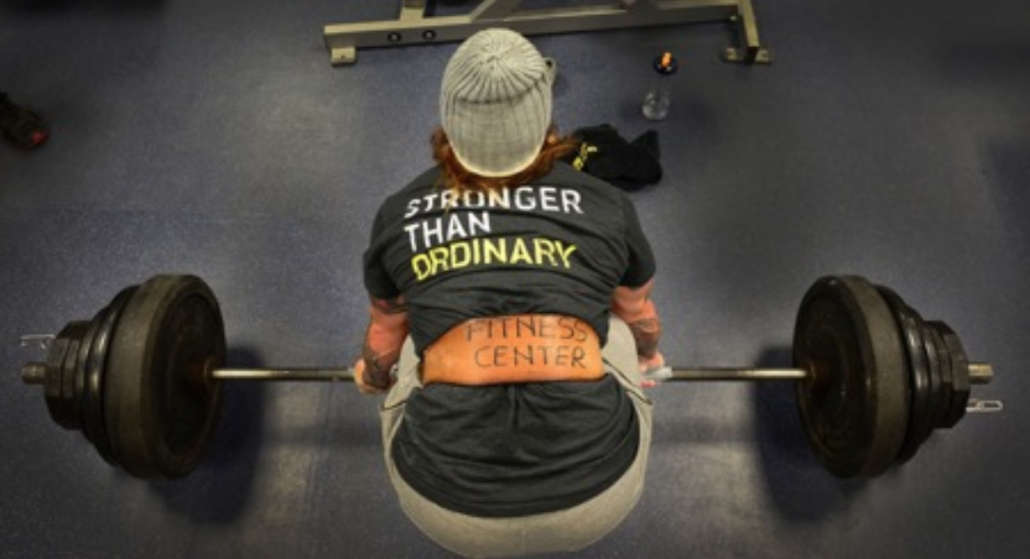
Ultimately, this is simply due to the mechanical
pressure of the belt and this is the intention. When lifting very heavy
weights, a belt probably has a purpose simply to prevent disc protrusions or
herniated discs.
The disadvantage of the belt is in its function itself, because any stabilization that comes from the outside does not help to strengthen the hull. On the contrary, in the long term, it could even lead to a weakening! Long story short: For very heavy weights or maximum tests, a belt can serve well.
Nevertheless, one should work on the own stabilization of the trunk in the area of the skeleton as well as the respiratory muscles. What also applies here it the approach: «Not either or», but «as well as»!
Diaphragm training / breathing training vs. Cardiovascular Training
Consideration in the context of strength training! Anyone who practices extreme endurance sports (for example, a marathon, etc.) should, of course, practice sport-specific training.
Cardiovascular training (CVT) is – in my opinion – performed in strength sports only to a limited extent with the aim of an aerobic endurance increase, but – in most cases – probably much more for the purpose of a more efficient oxygen supply to the skeletal muscle for body fat reduction.
The debate over how (High Intensity) Interval Training (HIIT) – such as sprints – are superior to conventional endurance training (“steady state cardio”), has been going on for decades, and there is probably no real clear outcome.
For efficiency reasons alone (invested time / resulting benefit), I would personally tend to interval training.
A 1980 American Journal of Medicine study of people suffering from quadriplegia (a form of paraplegia involving all four limbs) came to the following conclusion:
(…) The measurements were repeated after 8, 12 and 16 weeks of inspiratory muscle training consisting of inspiring for a period of 30 minutes daily, six days a week, against a resistance just sufficient to produce the electromyographic changes of fatigue. A significant and progressive increase in Pmmax and Pmcrit was found during the training (…) (Gross et al., 1980).
This short excerpt summarizes that breathing training (against inhalation resistance, NOT exhalation) in this study (over several months), etc. came to a significant increase in diaphragm strength and endurance.
Since these were persons with paraplegia whose diaphragmatic muscles were probably weakened by their condition, it remains to be discussed to what extent a similarly positive effect results in persons with an undisturbed diaphragm.
However, another study, “Effects of Inspiratory Muscle Training in Elderly Women on Respiratory Muscle Strength, Diaphragm Thickness and Mobility” from 2014, has come in the same direction.
It came to the conclusion that inspiration training (from Latin in / spiratio = inhale) with moderate intensity strengthens the breathing, diaphragm thickness and diaphragmatic mobility in older women.
Respiratory muscle is also strengthened
If you have not read my first article on inspiratory muscle training (O2 Trainer by Bas Rutten – More power for your workout), here’s the summary:
The respiratory muscles include:
- · Diaphragm
- · Intercostal muscles (intercostal muscles, Latin inter = between, Latin costa = rib = Greek pleura)
The respiratory aid muscles include:
- · Head turning (M. sternocleidomastoideus)
- · Sawtooth muscles (Mm. Serrati)
- · Pectorals (Mm. Pectorales)
- · Stair muscles (Mm. Scaleni)
- · Trapezius muscle (M. trapezius)
Inspiratory muscle training works on the same principles as skeletal muscle training. It is done against a resistance muscle work, which then – after appropriate regeneration – leads to adaptation.
In inspiratory muscle training, you breathe against increased resistance, forcing the respiratory and respiratory muscles to work harder.
Important: In my opinion, you should only inhale against a resistance and exhale without resistance. Unfortunately most (if not all) respiration masks do also restrict the exhalation.
Why I see the advantage only in an increased resistance of the inspiration, you can read here (German) again in detail.
Breath Belt – connection between diaphragmatic breathing and hip mobility
The “Breath Belt” is a waist belt developed by former National Football League (NFL) player Jesse Ohliger.
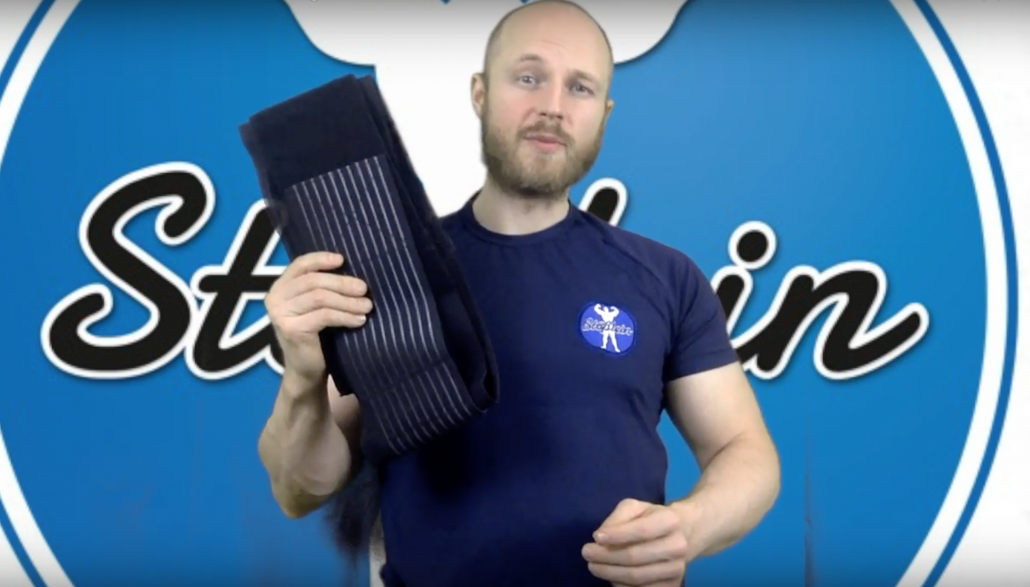
According to Ohliger’s own information, it came out of necessity for the development of the Breath Belt to solve his 10-year battle with chronic hip and back pain.
After several unsuccessful rehabilitation and consultation appointments with the – as he writes – “best” NFL and “NCAA” doctors, Jesse was forced to find out what was slowing his “progress.”
From his retrospective, this led to the tireless mission to help himself and countless other NFL and NCAA players with similar problems.
Using many different methods, such as yoga, classical pilates, anatomy and breathing techniques, he has developed the best “tool” for preventing back and hip injuries.
Many thanks to Jesse Ohlinger who kindly provided me with a Breath Belt for testing!
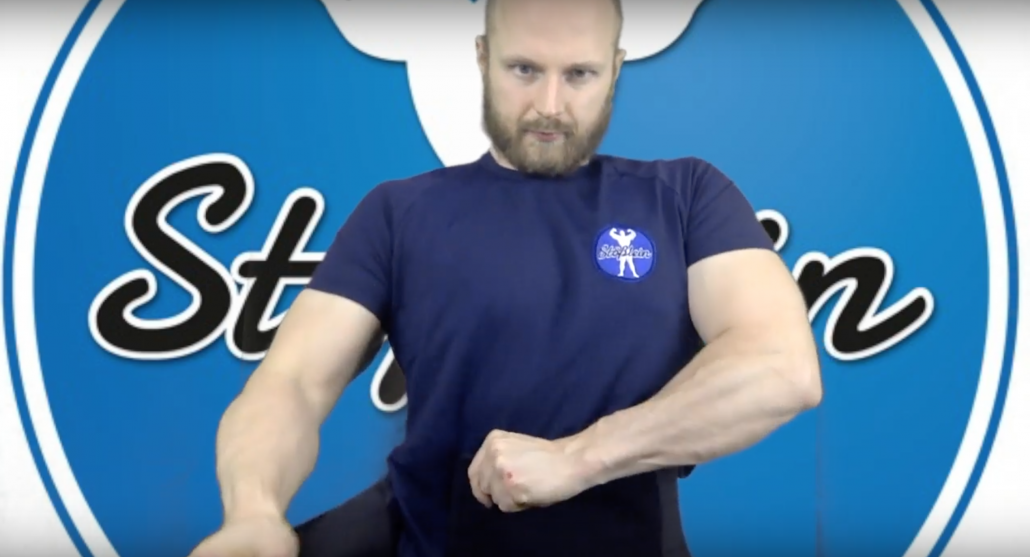
Ohlinger also writes that after more than a year – in which he visited other doctors, rehabilitation specialists and “Strength and Conditioning” – coaches – it became clear that everyone overlooked something.
From Jesse’s point of view, this was the connection between respiratory mechanics and optimal “hip functionality“. In his opinion, these systems are coupled together! I had direct contact with Jesse and he wrote to me:
(…) There are many reasons why it works, but the obvious one is this. By actively resisting the constant tactile breath cues within the BB, you TURN ON (lengthen) all of the abdominals which TURNS ON (or unrestricts) the psoas/QL/Lats as the lumbar is forced to decompress by breathing. Unlike other “support belts” YOU HAVE TO DO THE WORK or it won’t work.(…)”
From the ideas and approaches outlined above, the Breath Belt was born!
You can find the described tests in every search engine on the internet.
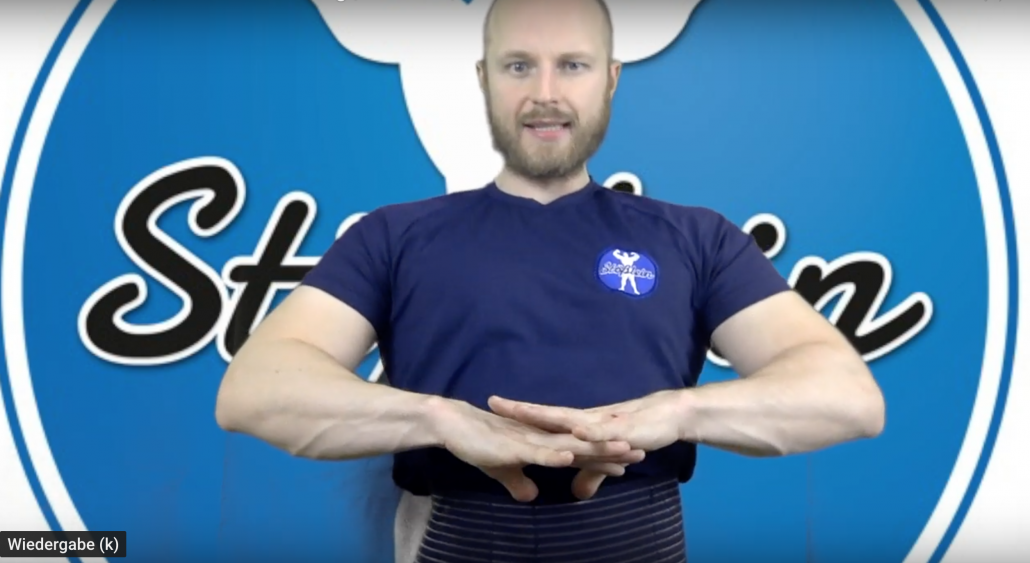
When / how does Jesse recommend wearing the Breath Belt?
In our contact he wrote me the following:
” (…) I have been the test dummy and have brutally tested the BB in pretty much any sitution in the gym or hiking/running. I have worn it for 8 straght hours tight as possible with softballs! Good news is im still alive lol and actually took a nap with it during that session (parasympathetic benefits). I recommend beginners use it for 15-20 minutes 2-3 times a day. Can begin when you wake up and go to bed, or try it simply when you drive to and from work. People wear it sitting at work, standing while giving speeches, or after a long stressful day (brings you into the present/parasympathetic benefits) (…)”
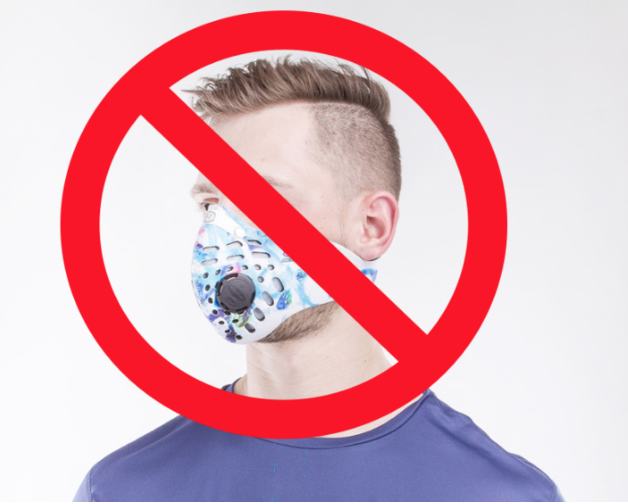
Conclusion
No matter what your level of performance is, or what your ambitions are (athletic), inspiratory muscle training is – in my point of view – a worthwhile thing.
There are different “tools” for implementation such as e.g. the Bas Rutten O2-Trainer or the Breath Belt.
Of course, not everyone immediately needs such “tools”. As with all training devices, it depends again on when you can use which “tools” and, most importantly, in order to get the most out of it.
Restrictive breathing training should, in my opinion, be limited to inspiration. All conventional breathing masks fall through the grid with it.
If you are interested in the Breath Belt, then you can order it here: https://www.thebreathbelt.com (advertising link) and remember: if the Psoas “fires” properly, then the Glutaeus muscles also “fire”. The hamstrings can then “relax”.
If you like this article, leave a comment and share it with your friends!
About the autor:
Bernd Stößlein holds a Bachelor of Arts in Fitness-Economics, a Master of Business Administration in Sportmanagement, is an internationally known strength coach/personal-trainer from Germany, the inventor of the BAMBOO BENCH® a Ph.D doctoral candidate and a “Heilpraktiker” (complementary and alternative medicine practitioner/naturopath), former Men’s Fitness cover model etc.
Resources
Brown, P. I.; Venables, H. K.; Liu, H.; de-Witt, J. T.; Brown, M. R.; Faghy, M. A. Ventilatory Muscle Strength, Diaphragm Thickness and Pulmonary Function in World-Class Powerlifters. European Journal of Applied Physiology 2013, 113 (11), 2849–2855 DOI: 10.1007/s00421-013-2726-4.
DePalo, V. A.; Parker, A. L.; AI-Bilbeisi, F.; McCool, F. D. Respiratory Muscle Strength Training with Nonrespiratory Maneuvers. Cardiopulmonary Physical Therapy Journal 2004, 15 (2), 35–35 DOI: 10.1097/01823246-200415020-00007.
Al-Bilbeisi F; McCOOL FD. Diaphragm Recruitment during Nonrespiratory Activities. American Journal of Respiratory and Critical Care Medicine 2000, 162 (2), 456–459.
HARMAN, E. V. E. R. E. T. T. A.; ROSENSTEIN, R. I. C. H. A. R. D. M.; FRYKMAN, P. E. T. E. R. N.; NIGRO, G. E. O. R. G. E. A. Effects of a Belt on Intra-Abdominal Pressure during Weight Lifting. Medicine & Science in Sports & Exercise 1989, 21 (2), 186–190.
Gross D; Ladd HW; Riley EJ; Macklem PT; Grassino A. The Effect of Training on Strength and Endurance of the Diaphragm in Quadriplegia. The American Journal of Medicine 1980, 68 (1), 27–35.
Disclaimer: This article is for information purpose only! Additionally, it should be clear that I’m not making any guarantees or promises regarding the accuracy, reliability or completeness of the information presented. Before you start this training program consult a physician/medical doctor etc. The information provided in this blog post is not intended to be a substitute for professional medical advice, diagnosis or treatment. Never disregard professional medical advice, or delay in seeking it, because of something you have read on this website. You should understand that when you’re exercise with the Breath Belt or other described devices, there is the possibility of physical injury. If you engage in this exercise or exercise program, you agree that you do so at your own risk, are voluntarily participating in these activities, assume all risk of injury to yourself, and agree to release and discharge Bernd Stoesslein Personal-Training from any and all claims or causes of action. Bernd Stoesslein is not responsible for any damage that might occure using the described devices!

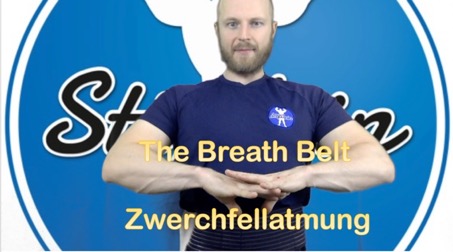



Dein Kommentar
An Diskussion beteiligen?Hinterlasse uns Deinen Kommentar!